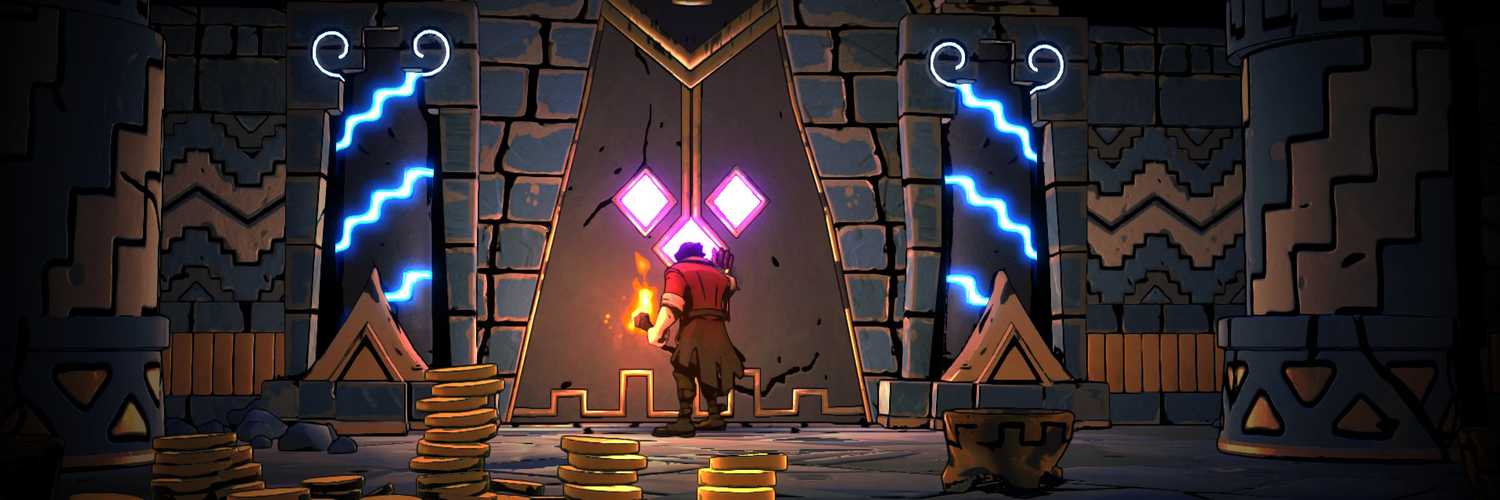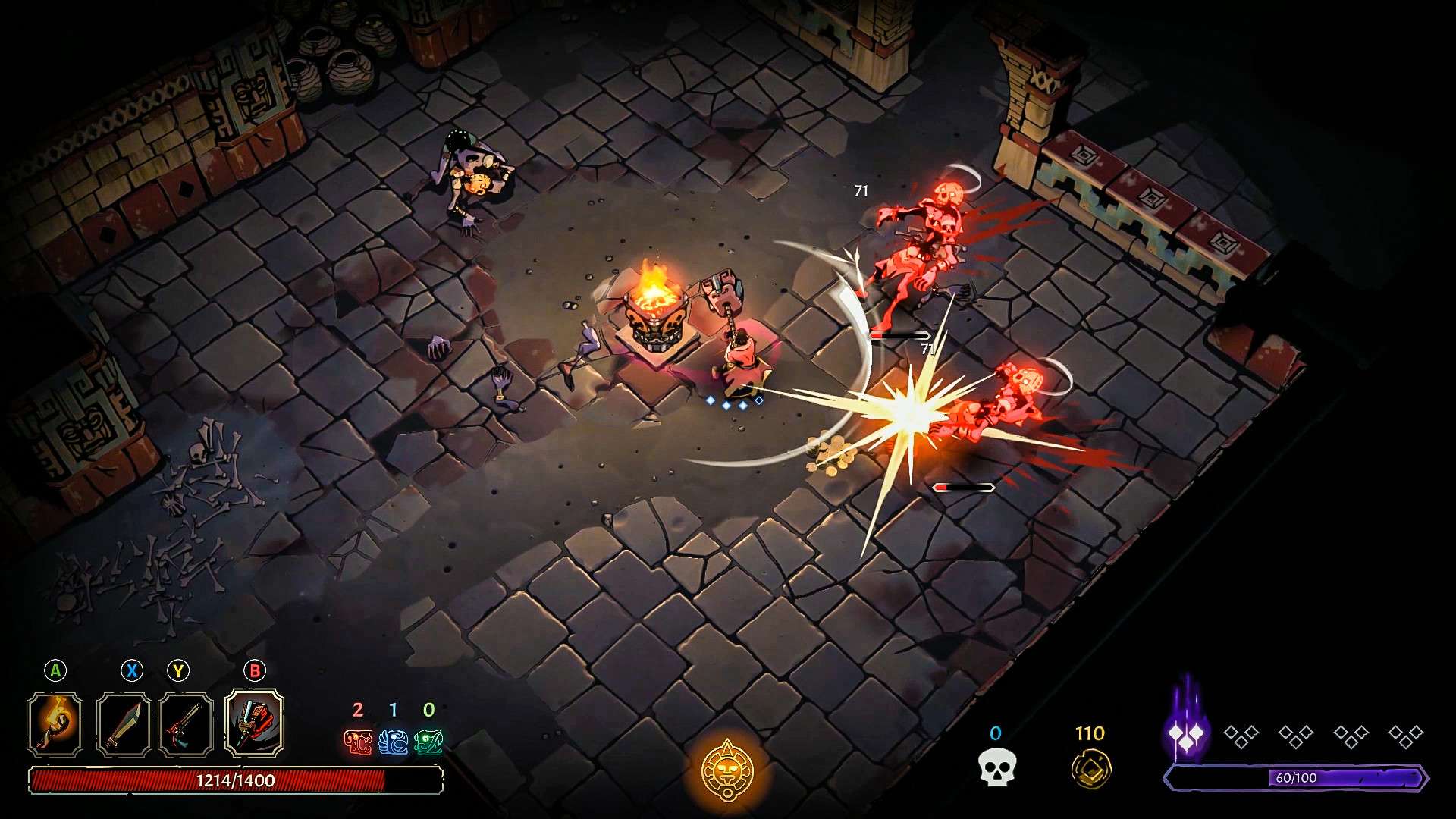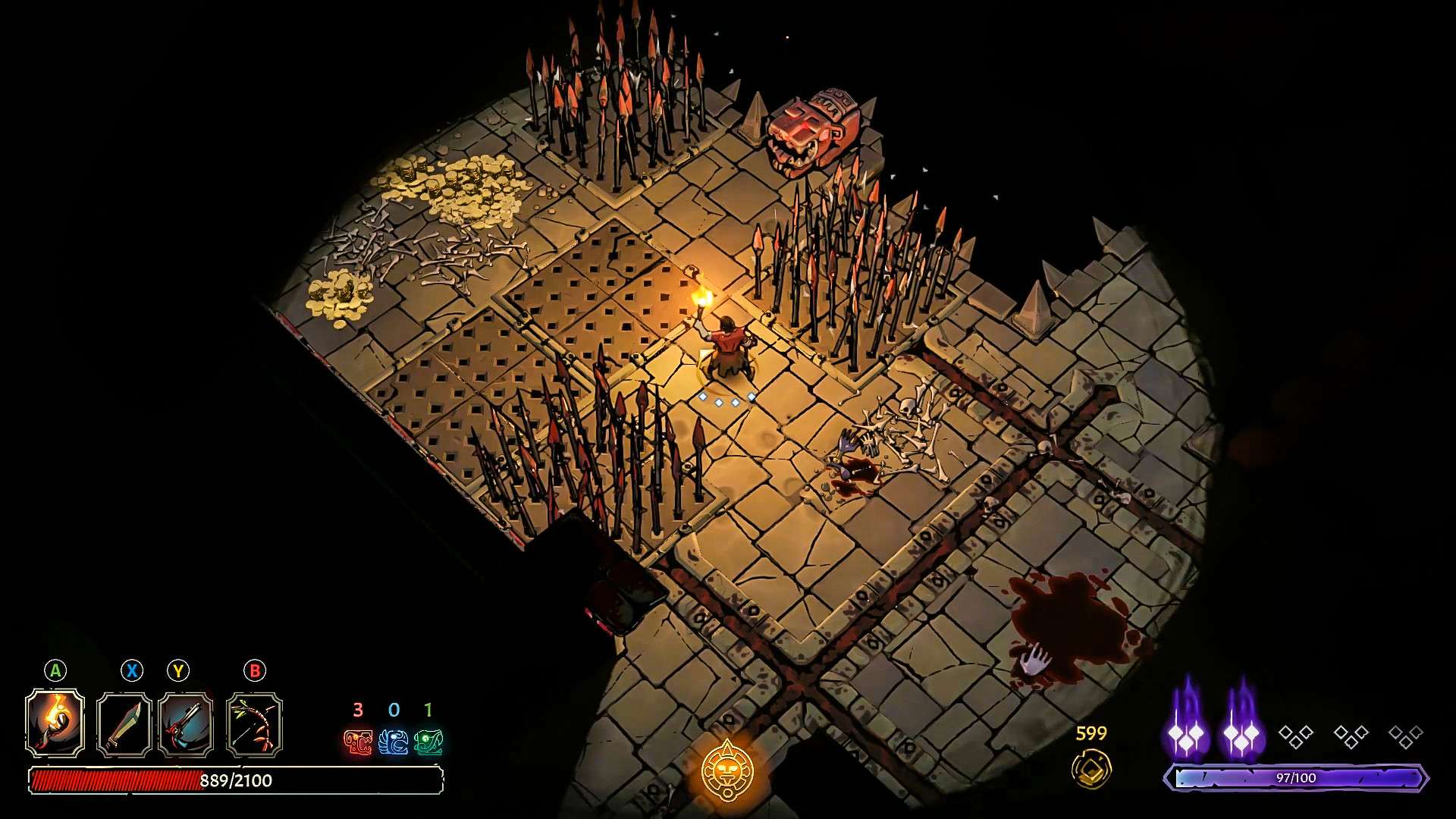
Curse of the Dead Gods PC Review
Curse of the Dead Gods is a roguelite dungeon crawler with heavy emphasis on risk vs reward gameplay based on combat execution and status management. There’s need to keep a timed kill counter (known as the Greed combo) going, in order to rack up as much gold as possible, meaning it’s heavily detrimental to back out of a fight even for a quick breather. And, on top of that, getting hit doesn’t only mean you drop said combo and take direct damage but special purple attacks can also directly increase your corruption meter that already jumps between every room, eventually cursing you with (mostly) negative effects. That means a single bad dodge or parry can screw up your health, finances, and get you cursed. It is vital to keep track of what’s going on and be completely aware of your surroundings, the enemies you’re facing, and what weapons, stamina, and positive effects you have at your disposal. Therein is the delicious spice of the game. Everything revolves around momentum and betting on your own skills, if you wish to make it to the end anyway.
I’m sure you’ve already seen it endlessly compared to Hades, my and many others’ favourite game of last year, but I don’t think that’s very fair, even though I’m also guilty of frequently making the comparison. The thing is, CotDG is not trying to be what Hades is – the progression, story, and personal interactions with characters are scrapped in favour of focusing on the gameplay, which I’m sure many people who didn’t click with Hades will greatly appreciate. It’s much more about jumping into a run ASAP and seeing what you can get done. The isometric brawling action is very similar of course, in the sense that they are of the same genre and thus share many standard elements, such as the multitude of traps to navigate, different weapons to master, and enemy patterns to learn. Outside of that, however, I would argue they are entirely different experiences. Different games with different purposes. CotDG is much shorter for one. It’s a more streamlined experience in general, lasting about 20-30 hours of pure temple raiding to get through the main campaign with very little to do afterwards. It’s tight and engaging then, when it starts to finally get a little stale, it’s all over; and that’s fine. It does exactly what it sets out to do excellently.

In Slay the Spire fashion, floor routes can be planned ahead of time and pivoted mid-run as needed. Personally I’m all about base stats, so I always went all in on the attribute rooms as opposed to relics, weapons, or weapon upgrades. Gold and timed challenge rooms can help with earnings, if necessary, and healing I see as a last resort as it means sacrificing a more long-term benefit. Rolling with the punches of the random layouts and trying to optimise your path based on current needs is a lot of fun, even when you know exactly what you’re going for. This strategic planning of resources is only further compounded by the fact you can pay for enhancements with either gold or blood (which is actually corruption, not health). I love this mechanic. It once again doubles down on the player doing well or handling negative effects, but the major flaw with it is that it’s just too easy to manage if you know what you’re doing. If you understand that the whole game balances on the Greed counter, scaling power and removing issues becomes a cakewalk, leaving only the most irritating enemies as real threats.
The other big twist is the light and darkness effect gimmick. Basically, you start each run with a loadout of a main, secondary, and two-handed weapon of varying random types, rarities, and strengths depending on some permanent unlockable upgrades (making the game a roguelite, as opposed to a roguelike). No matter the starting equipment though, you always start with a torch – which is forever locked to your character. It can be used as a weapon, but is totally ineffective. Instead it’s main purpose is to create light and spread that light to destructible beacons, which does a few things. 1 – it reveals active traps such as spike traps and statues that spit lightning whirlwinds at passersby, etc. This means you want to keep your torch out when traversing. 2 – the player takes more damage in darkness by default but depending on certain relics (passive in-run upgrades) and curses the illumination situation can also further effect damage reduction and output. I call this system a gimmick because I feel it falls completely flat. There are way too many factors to consider to really know if you can reliably stay in light or darkness but also because the last thing I want to do in a game about combat is run around each arena sparking little bonfires.

Still, even without every fresh touch making it’s mark on the genre or not quite living up to the high-difficulty level that many people boast the game has, I found it to be a great time. Are the curses as interesting or terrifying as they could be? No. Is the light/darkness thing a little out of sync with the experience? Perhaps. Does any of this stop the game from being a crisp, captivating experience full of awesome boss fights and experimentation? Absolutely not. It may end up being a little too simple and repetitive once you figure out the secret sauce but by that point I think the combat, exploration, and initial challenge should have already satiated any interested party’s appetite. The end game is for sure disappointing, basically just increasing enemy and trap damage, and the daily single-play events only really permanently cursing the player with whatever old status effect means there isn’t much replayability once you reach the end, but it is still there if you want it. For everybody else I’d say check it out, get your 25-hours of exciting action, and get out. Oh! – and nerf the bow!
